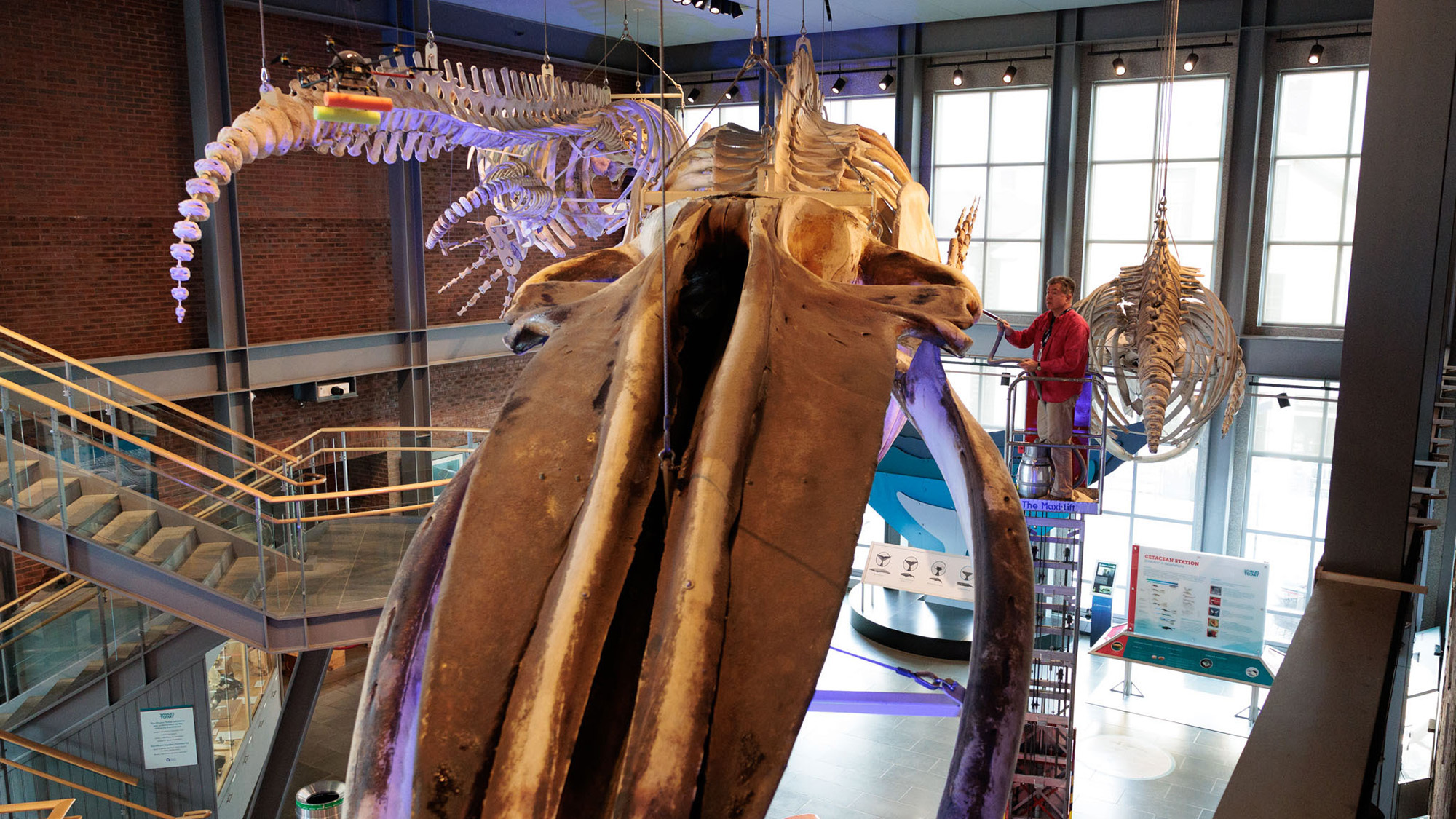When visiting the New Bedford Whaling Museum in southeastern Massachusetts, you might want to be a little careful standing under their 66-foot-long blue whale skeleton. That’s because these blue whale bones are still leaking oil, despite the cetacean being dead for over two decades.
Named King of the Blue Ocean–or KOBO for short–this rare blue whale skeleton has been on display at the museum since 2000. It is still leaking because the blue whale’s bone marrow is chock full of oil and much more oily than human bone.
[Related: Dozens of rare, endangered whales spotted off the coast of Martha’s Vineyard.]
“The marrow is oily and the oil is a source of energy for these animals. Especially the baleen whales, who typically have a period of the year where they don’t feed,” Robert Rocha, the New Bedford Whaling Museum’s Associate Curator of Science and Research, tells Popular Science. “There’s energy stored in the muscles and in the blubber, but the energy stored in the oil and the bones is a reserve energy source for them.”
Normally, whale skeletons are depleted of this oil through natural processes when it is buried on the seafloor and picked apart by barnacles and other animals. However KOBO was found on the bow of a ship. Despite being the largest animals on the planet, blue whales are still no match for giant tankers and accidental ship strikes.
“KOBO was probably about five years old and estimated to weigh about 80,000 pounds,” says Rocha. “He was accidentally killed by a 486-foot-long freighter that was transiting from Belgium to Providence, Rhode Island in 1998.”
The carcass was eventually towed to shore and dissected by scientists for research. The recovery team didn’t spend time really working on getting the oil out of the bones by leaving them out in the sun and treating them.
In 2010, the museum installed a special oil catcher to see how much oil they could capture. The catcher is near the whale’s rostrum–near its beak, snout, and vertebrae. It drips oil into the flask every day and the museum has 1,000 milliliters in a jar in storage and another 200 milliliters in the catchers.

“We missed a good 10 years of oil dripping,” says Rocha. “And it was certainly a lot wetter and messier those first 10 years.”
Local radio host Chris Arsenault from FUN107 told CBS affiliate WPRI that he got some oil dripped on him when visiting the museum a decade ago. However, he holds no hard feelings for KOBO, saying the order was pretty “pretty lucky.”
“I felt something wet on the back of my neck, and there was a brownish tint that ended up staining the back of my white-collared shirt,” Arsenault recalled. “I had to get rid of it.”
The oil from skeletons like this was not used to illuminate the lamps of the world during the high days of whaling in the Nineteenth Century. It wasn’t until shoreside whaling facilities and factory ships came around that whalers and eventually World War I soldiers could use the oil stored in bones.
“British soldiers were able to control the market on whale oil during World War I,” says Rocha. “They were rubbing it on their feet to help prevent trench foot and some of the pilots supposedly were putting it on their faces to help coat against wind and sun.”
[Related: We finally know how baleen whales make noise.]
It was also used in explosives, as one of the byproducts of whale oil soap is glycerol. When the glycerol is mixed with nitric and sulfuric acid the result is explosive nitroglycerin. This nitroglycerin was then used as a propellant for bullets and missiles in World War I and World War II.
“The funny thing about the chemistry, though, is that it has to be the oil from baleen whales,” says Rocha. “Tooth whale oils have waxy esters that can’t be used for glycerol and nitroglycerin. But because of those waxy esters, their oil was used as a lubricant.”

